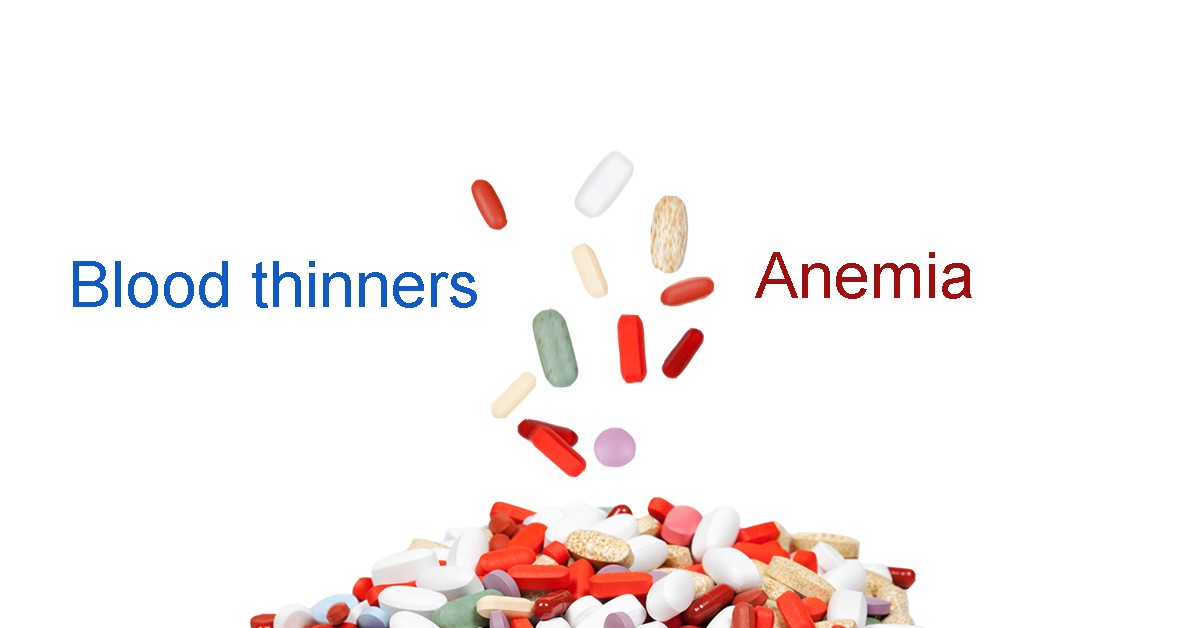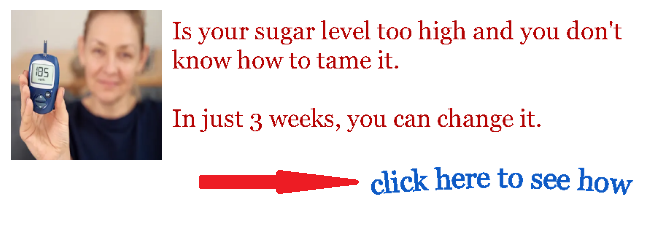What is anemia?
Anemia is a health condition characterized by a lack of adequate healthy red blood cells in the human body. In medical terminologies, anemia is the presence of low hemoglobin, the primary protein found in red blood cells.
Hemoglobin is responsible for transporting oxygen in all body parts. That means that individuals suffering from anemia have low hemoglobin, increasing the probability of body tissues lacking enough oxygen. The body needs iron, vitamin B-12, and folate to produce hemoglobin. Consumption of blood thinners results in iron deficiency, minimizing the chances of producing the required hemoglobin level. Based on the above argument, the answer is yes to whether blood thinners cause anemia.
Anemia can affect people of all ages, both male and female. However, it is more common among young girls since they lose a lot of blood during their menstruation periods. The gender gap closes as people age, and men and women have equal risks of suffering from the disease. Anemia blood thinners are the leading source of risk among the elderly due to their exposure to long-term illnesses resulting in iron deficiency in the body. People who develop mild anemia can resume their normal lives after treatment, while chronic anemia stays longer or never heals completely.
Mechanisms of anemia
There are two clinical classifications of anemia: increased blood loss and decreased blood formation. Increased blood loss can emerge from different factors, including hemorrhage and destruction of red blood cells. Hemorrhage refers to a scenario where individuals lose blood from ruptured blood vessels, which can occur internally or externally.
Anemia blood thinners increase the risk of bleeding since it hinders the formation of clots, which means that a victim will lose more blood. Loss of blood can also emaciate from the damage to red blood cells before the end of their lifespan. In a scenario whereby more red blood cells are destroyed than the bone marrow can produce, the victim becomes anemic.
Decreased blood formation is another clinical mechanism of anemia. It can result from a quantitative reduction of bone marrow activities that minimize the number of red blood cells produced. Deficiency in the supply and absorption of iron affects the production of healthy red blood cells. Such circumstances reduce the supply of hemoglobin in the body and the subsequent transportation of oxygen across various body parts. Consuming blood thinners when the blood formation is low increases the chances of an individual being anemic.
Causes of anemia
Researchers in the healthcare sector conducted research intended to answer the question, can blood thinners cause anemia? Several studies show that blood thinners can cause anemia because they deter the body from forming clots, which increases blood loss from raptured vessels. Examples of blood thinners proved to cause anemia are aspirin and heparin. Besides the anemic blood thinners, some other causes of anemia include chronic illnesses that affect the average production of red blood cells, such as lupus, advanced kidney failure, HIV, and tuberculosis. Diet inadequacies, especially on iron and Vitamin B-12. Sometimes, anemia is genetic and can spread from parents to infants.
Signs and symptoms of anemia
During the initial stages of anemia, the symptoms are so mild that they can go unnoticed. In the case of blood thinners and anemia, continued consumption of blood thinners worsens the condition making the signs and symptoms develop. Regardless of the mechanism that led one to be anemic, patients experience some common signs and symptoms.
The first signs and symptoms of anemic patients experience light headedness and dizziness, making them pass out. Other signs and symptoms include headache, irregular heartbeat, cold feet, pale skin, chest pain, weakness, and fatigue. When experiencing any or all of the signs and symptoms outlined above, people should make an appointment with doctors.
What is thin blood?
Thin blood refers to a condition where a person has few platelets responsible for blood clotting. A healthy person has platelets in the range of 150,000/ ml to 400,000/ ml. individuals with thin blood platelet levels are below 150,000/ ml. Blood-thinning medication plays a role in creating thin blood. Thin blood is closely associated with anemia and blood thinners since it is responsible for the illness.
If you are interested to know how food affects our body you can navigate to Natural Blood Thinners post my experiment.
Blood thinner and anemia
Blood thinners refer to medical substances that help to prevent and cure blood clots during the circulation process in the heart and vessels. Blood thinners are also known as an anticoagulant, for example, heparin and warfarin. Anticoagulant slows down the body’s process of forming clots. Antiplatelet are blood thinners that protect red blood cell platelets from clumping together to form clots. Doctors cannot prescribe blood thinners to help break the clots that have already formed. However, the anticoagulant minimizes the chances of the clots growing bigger.
Blood thinners help treat clots, which can have detrimental effects on patients if left on the blood vessels. People at risk of clotting take blood thinners to protect themselves from other related health conditions. Blood thinners cause anemia when used unsafely. Some safety precautions to prevent anemia blood thinners is to ensure that users take regular tests to verify how clots are forming. Blood thinners lead to excessive bleeding, among the top causes of anemia.
Side effects of blood thinners
The most common side effect experienced after consuming anemia blood thinners is excessive bleeding since the medical substances reduce the ability to form clots. Blood thinner users also experience nose and gum bleeding. An individual taking blood thinners is expected to bleed for a prolonged period when injured due to challenges in clot formation.
Women having their menstruation are likely to experience heavy bleeding if they take blood thinners. Other side effects of blood thinners include dizziness, rashes, hair loss, and muscle weakness. People with blood thinners in the system are likely to experience internal bleeding after sustaining injuries. Blood thinners cause anemia because they expose patients to risk factors associated with the condition.
Preventive measures
It is possible to prevent anemia from occurring due to the consumption of blood thinners. As earlier noted, blood thinners minimize the levels of iron deficiency in the body. The result is a reduction in the number of red blood cells and hemoglobin required to transport oxygen across the body.
Individuals taking blood thinners following a doctor’s prescription should adapt some habits that can protect them from an anemic. Such people should make healthy dietary choices on foods rich in iron and Vitamin B12.
It is essential to take foods rich in Vitamin C since they help easily absorb food. Studies reveal that drinking the recommended amounts of water daily helps maintain the required hemoglobin levels in the blood. Engaging in physical exercises is another practice that helps manage anemia. However, if one is already experiencing anemic signs and symptoms, it is advisable to begin slowly in exercises and gain momentum progressively.
Diagnosis of anemia blood thinners
Treatment of anemia and blood thinners follows the same procedure as any other type of anemia. The process begins with the diagnosis to determine the relevant actions. The healthcare providers will inquire about medical history and conduct physical exams before running tests in the laboratory. The Complete Blood Count (CBC) is among the blood tests conducted to determine the number of red blood cells and hemoglobin in the collected sample.
A healthy adult should have a hematocrit value in the range of 38.3% to 48.6% in men and 35.5% to 44.9%in women. The recommended hemoglobin levels are at least 13.2 and 11.6 grams for men and women respectively. Another blood tests help determine the shape and size of red blood cells.
Healthcare providers might also be interested in conducting further tests if they find one anemic. The additional tests tend to determine the mechanism involved when one contracts anemia. Conducting blood or urine tests helps reveal whether one has hemolytic anemia. In some rare cases, healthcare providers perform bone marrow biopsy. It is recommended that people should only use blood thinners under doctors prescription given the risks they pose such as contracting anemia. Individuals using blood thinners should adapt all the preventive measures against anemia blood thinners to ensure that they are safe.
Treatment of Anemia
The treatment of blood thinners and anemia is two-faced. There is a need to treat thin blood and anemia to avoid recurrence. In extreme cases, treating thin blood might require a blood transfusion, while healthcare providers can also prescribe corticosteroids. However, patients are unlikely to get the blood tests early enough to determine their blood is thin before showing anemic symptoms. As a result, blood thinners and anemia are targeted to treat the anemic symptoms. Anemia treatment is diverse since it involves taking supplements and surgery in extreme cases. Iron supplements can be administered orally or through intravenous (IV) infusion.
Doctors also recommend that patients take food high in iron nutrients like Vitamin C. Anemia blood thinners result from a lack of adequate red blood cells and hemoglobin in the body. Doctors recommend red blood cell transfusion in such instances. Surgical procedures are applicable when the patient is diagnosed with internal bleeding.


